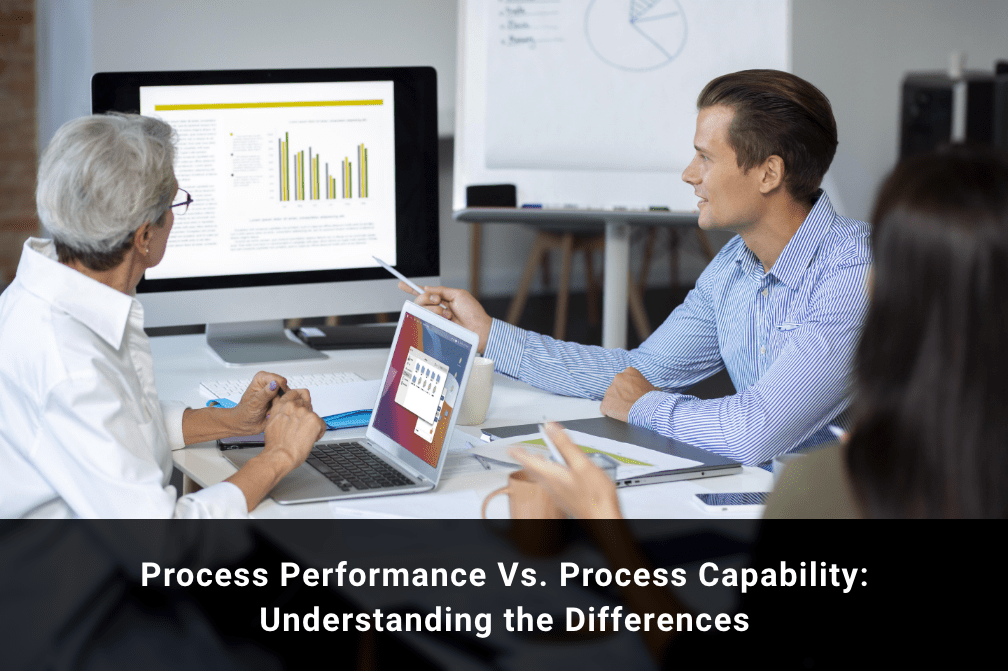For a business to thrive, it is crucial to ensure that its processes perform well and have the ability to meet the requirements. But what exactly do we mean by process performance and process capability? Let's delve deeper into these concepts and understand their differences.
Understanding Process Performance
Process performance refers to how effectively and efficiently a process delivers outputs that align with the desired requirements. It encompasses several aspects, including efficiency, effectiveness, and quality. It revolves around consistently achieving the desired results while minimizing errors and variations.
- Efficiency: Process efficiency relates to how well resources, such as time, money, and materials, are utilized during the process. A highly efficient process maximizes output while minimizing waste and unnecessary steps.
- Effectiveness: Process effectiveness pertains to the ability of a process to achieve its intended purpose or goal. An effective process delivers the desired outcomes in line with the defined objectives.
- Quality: Process quality focuses on the standard of the outputs produced by a process. It involves meeting or exceeding customer expectations, adhering to specified criteria, and ensuring the results are free from defects or errors.
Process performance management often involves measuring key performance indicators (KPIs) that quantify various aspects of the process, such as cycle time, error rate, customer satisfaction, and productivity. By regularly assessing process performance, businesses can identify areas for improvement and implement strategies to enhance efficiency, effectiveness, and quality.
What Affects Process Performance?
Several things can influence how well a process performs. Here are some essential factors to consider:
- Process Design and Documentation: Having clear and well-designed processes with proper instructions help make things run smoothly and minimizes errors.
- Using Resources Wisely: Ensuring you have the right people, materials, and equipment allocated to your processes can make a big difference in performance.
- Continuous Improvement: Regularly reviewing and improving your strategies based on feedback helps you become more efficient and effective.
- Keeping Things Consistent: Standardizing procedures and following best practices helps maintain consistency and reduces variations.
- Training and Skill Development: Ensuring your employees have the necessary skills and knowledge to perform their tasks well improves overall process performance.
Measuring Process Performance
Businesses use different process performance metrics and key performance indicators (KPIs) to evaluate process performance. These help measure how well a process is doing and meeting its goals. Some standard metrics include:
- Cycle Time: How long it takes to complete a process from start to finish.
- Throughput: The rate at which a process produces output within a specific time.
- Yield: The percentage of defect-free output compared to the total number of units processed.
- Customer Satisfaction: Listening to customer feedback and assessing their satisfaction with the process outcomes.
Understanding Process Capability
While process performance analysis focuses on actual performance, process capability looks at the potential of a process to meet requirements. It evaluates if a process can consistently produce outputs within specified limits.
Key Elements of Process Capability
To understand process capability better, let's look at its main elements:
- Specification Limits: These are predetermined acceptable limits that the process outputs must fall within to meet requirements.
- Process Variation: Process capability considers the natural variation that happens during the execution of a process. It aims to see if the process can consistently produce outputs within the desired limits.
- Capability Indices: Businesses use different capability indices like Cp, Cpk, Pp, and Ppk to measure process capability and compare it to the specification limits.
Evaluating Process Capability
To assess process capability, statistical analysis is often used to measure the distribution of process outputs and compare them to the specification limits. This analysis helps understand how well the process performs and identifies areas for improvement. Here are a few common tools used:
- Histograms: These charts show how the process outputs are distributed, making spotting variations and potential issues easier.
- Control Charts: Control charts track process performance over time, helping identify trends, shifts, and conditions that need attention.
- Process Capability Ratios: These ratios, such as Cp and Cpk, give a numerical measure of how capable the process is, with higher values indicating better capability.
Process Performance Vs. Process Capability
Process performance and process capability are related but different concepts. Here's a summary of their differences:
- Focus: Process performance looks at actual outcomes, while process capability assesses the potential to meet requirements.
- Evaluation Scope: Process performance relies on real-world data and metrics, while process capability often involves statistical analysis.
- Short-term vs. Long-term: Process performance focuses on immediate results, while process capability looks at long-term consistency.
- Improvement vs. Assessment: Process performance aims to find areas for improvement, while process capability provides an overall assessment of the process's potential.
Conclusion
Process performance and process capability are crucial for optimizing business operations. Organizations can improve their processes by understanding their differences and striving for excellence.
Process performance management ensures consistent and high-quality outputs, while capability assesses the process's potential to meet requirements. Businesses can set themselves up for success in today's competitive landscape by focusing on both aspects.
Remember, achieving a high search ranking involves various factors beyond content quality. Factors like website authority, relevance, and user experience also play a role. However, our engaging and straightforward article and the helpful mermaid diagram can contribute to boosting your visibility online.
Want to enhance the performance of your processes? Connect with experts at Growth Natives today! We are one of the fastest-growing digital marketing, Marketing Automation, and Salesforce Agencies with a global presence and a proven track record. Email us at info@growthnatives.com or visit our website to know more about our services.
Author Box
Rahul Saini
Rahul Saini is a published author of three books, brand storyteller, and marketing specialist with experience across multiple industries like manufacturing, IT, and publishing. He is an intellectually curious, and creative person who loves to tell stories, read books, and write fiction.





